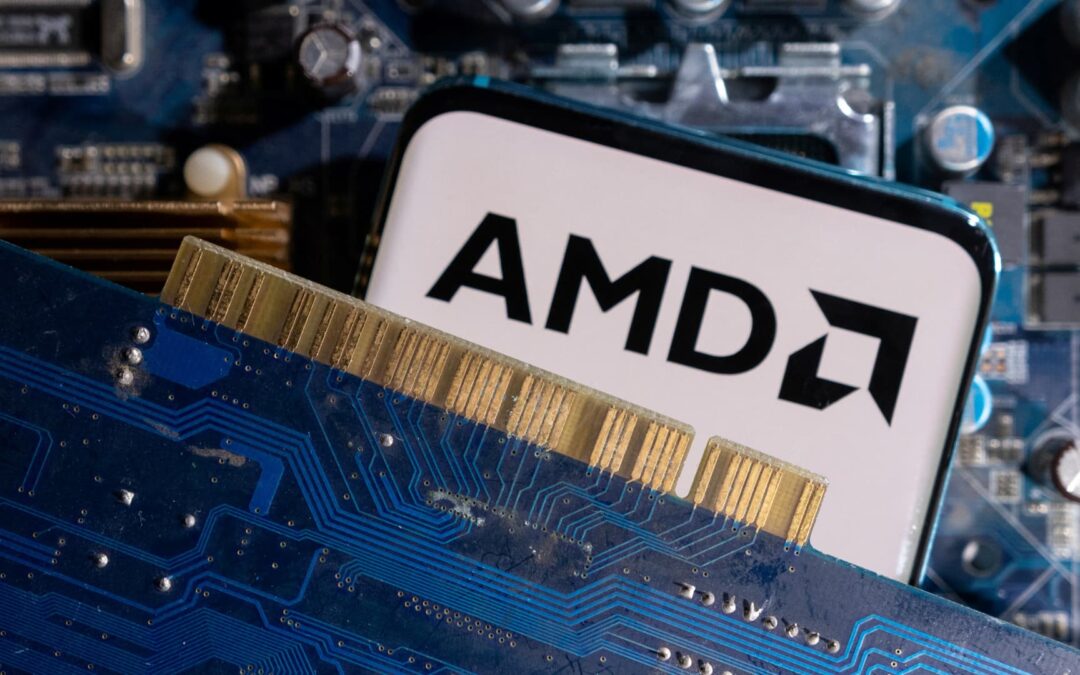A smartphone with a displayed AMD logo is placed on a computer motherboard in this illustration taken March 6, 2023.
Dado Ruvic | Reuters
American semiconductor company Advanced Micro Devices has failed in getting a made-for-China AI chip past U.S. regulators and will need to apply for an export license, Bloomberg reported Tuesday.
The report said AMD designed the chip to have lower performance than its premium products in order to comply with U.S. export restrictions. But Bloomberg reported the Commerce Department did not clear the chip for sale in China because it was still too advanced.
AMD will now have to obtain a license from the department’s Bureau of Industry and Security, the report said.
It’s not clear if the company will apply for the license. AMD and the Commerce’s Bureau of Industry and Security did not immediately respond to CNBC’s requests for comment.
While the U.S. has restricted sales of products containing the nation’s most advanced semiconductor technologies to China, citing national security concerns, American companies have continued to sell mature or less advanced technologies to the massive market without licenses.
AMD’s products include chips that can be used to develop and train AI models – something U.S. officials have warned that Beijing could use to gain military advantages.
In 2022, U.S. President Joe Biden’s administration unveiled an initial set of export controls to curb China’s access to advanced semiconductor technologies. Leading AI chip company Nvidia subsequently said it would sell slowed-down versions of their premium AI chips that comply with U.S. restrictions.
However, those chips were also banned in October, when the U.S. expanded restrictions to include more technology and target chips that were seen as circumventing controls.
Nvidia has since redesigned products to be less powerful for the Chinese market to align with the 2023 restrictions.
In the lead-up to the October restrictions, Nvidia had warned that further U.S. export curbs on its chips to China would risk a “permanent loss” for American semiconductor firms to lead in one of the world’s largest markets.
In Nvidia’s November earnings call, Chief Financial Officer Colette Kress said China and other regions targeted by U.S. export controls had consistently contributed approximately 20% to 25% of data center revenue over the past few quarters. While Nvidia reported blockbuster fourth-quarter results, Kress noted during the February earnings call that data center revenue from China declined significantly following the U.S. export curbs.
Compared with Nvidia, AMD had a smaller foothold in the Chinese AI chip market prior to the trade restrictions. But the company has begun targeting the AI chip market more aggressively, launching a new MI300 product line that is seen as a challenge to GPU products from Nvidia.
It’s not clear which Chinese customers AMD designed the chips for. Some leading Chinese tech giants, such as Tencent have reportedly stockpiled enough advanced chips from Nvidia to train their AI chatbots’ capabilities for “at least a couple more generations.”
Meanwhile, U.S.-sanctioned Huawei is reportedly developing its own chips and chipmaking tools, along with other domestic firms, as Chinese companies attempt to fill the gap created by U.S. restrictions.
Despite restricted sales to China, shares of both Nvidia and AMD have soared amongst an AI frenzy. Nvidia is up more than 250% in the past year while AMD surged over 150%.
Read the full report from Bloomberg.







